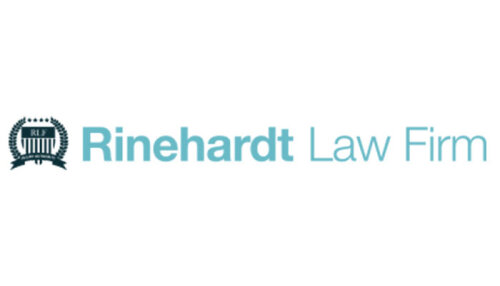Best Birth Injury Lawyers in Ontario
Share your needs with us, get contacted by law firms.
Free. Takes 2 min.
List of the best lawyers in Ontario, United States
Note: Ontario is a province in Canada, not a state in the United States. This guide covers Birth Injury law in Ontario, Canada. If you meant a U.S. jurisdiction, please specify the state for a tailored guide.
1. About Birth Injury Law in Ontario, Canada
Birth injuries refer to injuries to a baby or mother that occur during labor and delivery due to medical negligence. In Ontario, these claims are typically pursued as civil personal injury actions in the Ontario Superior Court of Justice. A successful claim generally requires proving a breach of the standard of care, causation, and damages. Expert medical evidence is usually essential to establish what a reasonably skilled practitioner should have done in the circumstances.
Ontario law allows for both civil remedies and, where applicable, professional regulation actions under the Regulated Health Professions Act. A claimant may pursue damages for past and future medical care, rehabilitation, equipment, loss of income, and non-pecuniary damages such as pain and suffering. Each case turns on its own facts, the evidence available, and the experienced assessment of medical experts.
Most Ontario civil actions for personal injuries, including birth injuries, are subject to a two year limitation period from discovery of the injury, with special rules for minors.
For new or ongoing families, understanding the timing and evidence requirements is crucial. See the Limitations Act for the general time limits that apply to most tort claims in Ontario. See the Regulated Health Professions Act and the College of Physicians and Surgeons of Ontario for professional regulation rules relevant to physicians and other health practitioners.
Key Ontario sources to consult for the legal framework include the Limitations Act, 2002, the Regulated Health Professions Act, and the College of Physicians and Surgeons of Ontario. These sources govern how claims are filed, the standards doctors must meet, and how disciplinary matters are handled.
For quick reference, Ontario’s official sources provide the current statutory framework and basic procedural guidelines. You can review the Limitations Act here and the Regulated Health Professions Act here. See also CPSO for physician regulation and professional standards.
Limitations Act, 2002 - Ontario law governing when actions must be started.
Regulated Health Professions Act, 1991 - Framework for the regulation of health professionals in Ontario.
College of Physicians and Surgeons of Ontario (CPSO) - Regulates physicians, sets professional standards, and investigates complaints.
2. Why You May Need a Lawyer
Birth injury cases are complex and require specialized expertise. A lawyer with Ontario medical malpractice experience can help you assess liability, gather records, and pursue appropriate compensation. The following real-world scenarios illustrate when legal counsel is often necessary.
Scenario 1: You notice your child has a significant brain injury after delivery. Medical records suggest signs of fetal distress were not acted upon promptly. A lawyer can review timelines, obtain expert opinions, and determine if negligence occurred and who bears responsibility.
Scenario 2: An Erb’s palsy injury appears after birth due to shoulder dystocia. If care providers used excessive traction or failed to implement standard protocols for shoulder dystocia, a birth injury solicitor can assess breach of duty and causation with obstetric experts.
Scenario 3: Delayed emergency C-section after signs of fetal compromise. If a timely cesarean section could have reduced injury but was delayed, a legal advocate can help evaluate negligence and damages for long-term care needs.
Scenario 4: Insufficient or late diagnosis of neonatal hypoxia. A lawyer can help determine if timely testing and monitoring were standard of care and whether delays caused injury and future care costs.
Scenario 5: Informed consent issues for maternal procedures during delivery. If the patient was not properly informed about risks of procedures or alternatives, this may affect both liability and remedies and should be reviewed by counsel.
Scenario 6: Ongoing care costs and future needs. If a child requires lifelong therapies and adaptive equipment, a lawyer can help quantify and pursue compensation for future costs in addition to past losses.
In Ontario, obtaining early legal advice is important because the two-year limitation period can start at discovery or knowledge of the injury, and there are special rules for minors. A qualified attorney or solicitor can explain the timing, evidence, and settlement options based on your family’s circumstances.
3. Local Laws Overview
Limitations Act, 2002 governs when a birth injury claim must be filed. The general rule is two years from when you knew or ought to know about the injury, with special provisions for minors. This is a central consideration in planning a birth injury case.
Limitations Act, 2002 - Ontario statute detailing limitation periods for civil actions, including personal injury claims.
Regulated Health Professions Act, 1991 sets the regulatory framework for health professionals in Ontario. It governs professional conduct, the scope of practice, and the processes by which regulators handle complaints and disciplinary actions.
Regulated Health Professions Act, 1991 - Ontario statute establishing health professional regulation and accountability.
Health Care Regulation and Professional Standards include the standards and guidelines used by regulators and hospitals in Ontario. These standards are relevant when evaluating whether a practitioner met the expected standard of care in obstetrics and neonatal care.
College of Physicians and Surgeons of Ontario (CPSO) - Regulates physicians in Ontario, sets practice standards, and investigates complaints related to professional conduct.
Ontario uses common law for negligence and tort claims, with regulatory and disciplinary remedies running in parallel or separately. For procedural steps, consult the Ontario Court of Justice and Superior Court of Justice resources. The above statutes and regulators provide the framework for liability and professional accountability in birth injuries.
4. Frequently Asked Questions
What is a birth injury claim in Ontario?
A birth injury claim seeks compensation for injuries to a baby or mother caused by medical negligence during delivery. It involves proving duty of care, breach, causation, and damages in court or through negotiated settlements.
How do I start a birth injury lawsuit in Ontario?
Begin by speaking with a specialized birth injury attorney. They will review medical records, identify responsible parties, and file a claim in the appropriate Ontario court. The process often includes obtaining expert opinions and preserving records.
When can I file a birth injury claim after birth?
Most tort claims in Ontario must be filed within two years of discovery of the injury, with special rules for minors. Timelines vary by case, so consult a solicitor early.
Where should I file a birth injury case in Ontario?
Civil birth injury cases are typically filed in the Ontario Superior Court of Justice. Your lawyer handles jurisdictional requirements and filings on your behalf.
Why might I need a birth injury attorney?
A lawyer helps determine negligence, gathers critical evidence, coordinates expert testimony, and negotiates settlements or represents you at trial. They also explain complex rules on limitation periods.
Can I sue for medical malpractice for birth injuries in Ontario?
Yes. If medical negligence contributed to the injury, you may pursue a personal injury claim for damages. A lawyer can assess liability and the scope of damages.
Should I contact a lawyer if my baby was injured at birth?
Yes. Early consultation can help protect evidence, identify responsible parties, and determine the best timeline for pursuing compensation.
Do I need a medical expert to prove negligence?
Yes. In birth injury cases, expert obstetricians and other medical specialists typically provide opinions on standard of care and causation.
Is there a time limit to sue for birth injuries in Ontario?
Most claims must be started within two years of discovery of the injury, with special provisions for minors who have until two years after turning 18 to commence proceedings.
How much can I claim for damages in a birth injury case?
Damages include past and future medical care, therapy, devices, lifestyle costs, and non-pecuniary damages like pain and suffering. The amount varies widely by case and needs expert calculation.
What is the difference between a birth injury claim and a disability benefit claim?
A birth injury claim is a civil action seeking compensation for injury caused by negligence. Disability benefits are typically government or insurer benefits based on disability status, not fault.
Do contingency fee arrangements apply to birth injury cases in Ontario?
Contingency fee arrangements are common in Ontario personal injury practice, including birth injuries, but require a written agreement and must comply with Law Society of Ontario rules.
5. Additional Resources
- Limitations Act, 2002 - Ontario government statute detailing when civil actions must be filed. https://www.ontario.ca/laws/statute/02l24
- Regulated Health Professions Act, 1991 - Ontario statute governing regulation of health professionals. https://www.ontario.ca/laws/statute/91r18
- College of Physicians and Surgeons of Ontario (CPSO) - Regulator of physicians in Ontario, sets practice standards and investigates complaints. https://www.cpso.on.ca
6. Next Steps
- Confirm jurisdiction and gather initial documents. Gather birth records, hospital records, and any communications with healthcare providers within the last few years.
- Identify a lawyer who specializes in birth injuries or medical malpractice in Ontario. Look for a practitioner with a track record in obstetric negligence cases.
- Schedule a consultation to discuss your case facts, potential defendants, and available remedies. Bring your documentation for review.
- Ask about fees and arrangements. Confirm whether the firm uses contingency fee agreements and how costs are handled if the case settles or goes to trial.
- Obtain an early medical opinion. Your lawyer will likely arrange for obstetric and neonatology experts to assess standard of care and causation.
- Discuss timing and strategy. Understand the expected timeline, including records gathering, expert reports, and potential settlement discussions.
- Decide on representation. If you proceed, your attorney will file the claim and manage communications with defendants and the court.
Lawzana helps you find the best lawyers and law firms in Ontario through a curated and pre-screened list of qualified legal professionals. Our platform offers rankings and detailed profiles of attorneys and law firms, allowing you to compare based on practice areas, including Birth Injury, experience, and client feedback.
Each profile includes a description of the firm's areas of practice, client reviews, team members and partners, year of establishment, spoken languages, office locations, contact information, social media presence, and any published articles or resources. Most firms on our platform speak English and are experienced in both local and international legal matters.
Get a quote from top-rated law firms in Ontario, United States — quickly, securely, and without unnecessary hassle.
Disclaimer:
The information provided on this page is for general informational purposes only and does not constitute legal advice. While we strive to ensure the accuracy and relevance of the content, legal information may change over time, and interpretations of the law can vary. You should always consult with a qualified legal professional for advice specific to your situation.
We disclaim all liability for actions taken or not taken based on the content of this page. If you believe any information is incorrect or outdated, please contact us, and we will review and update it where appropriate.









